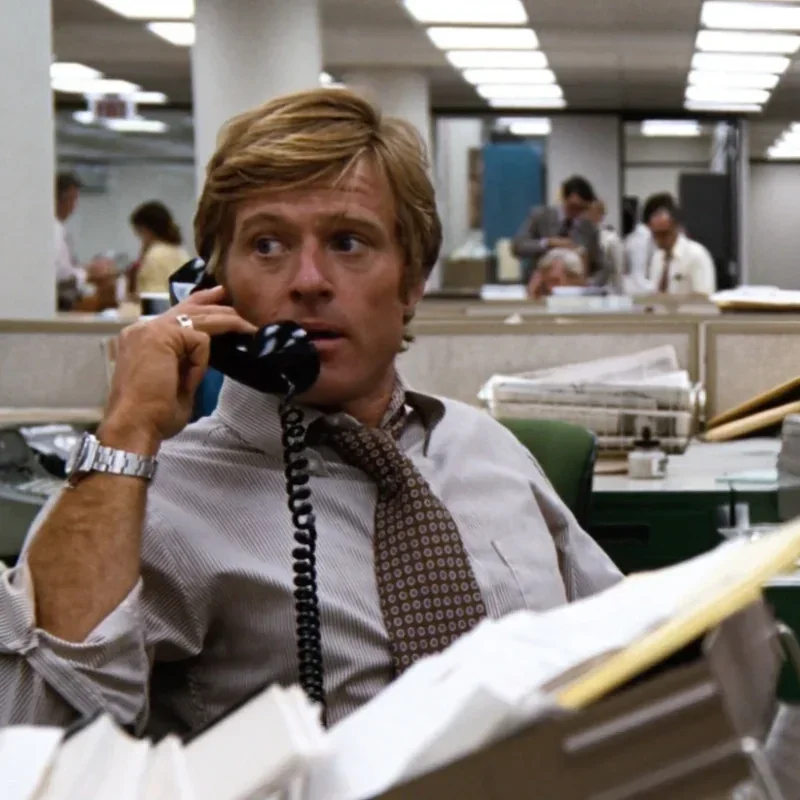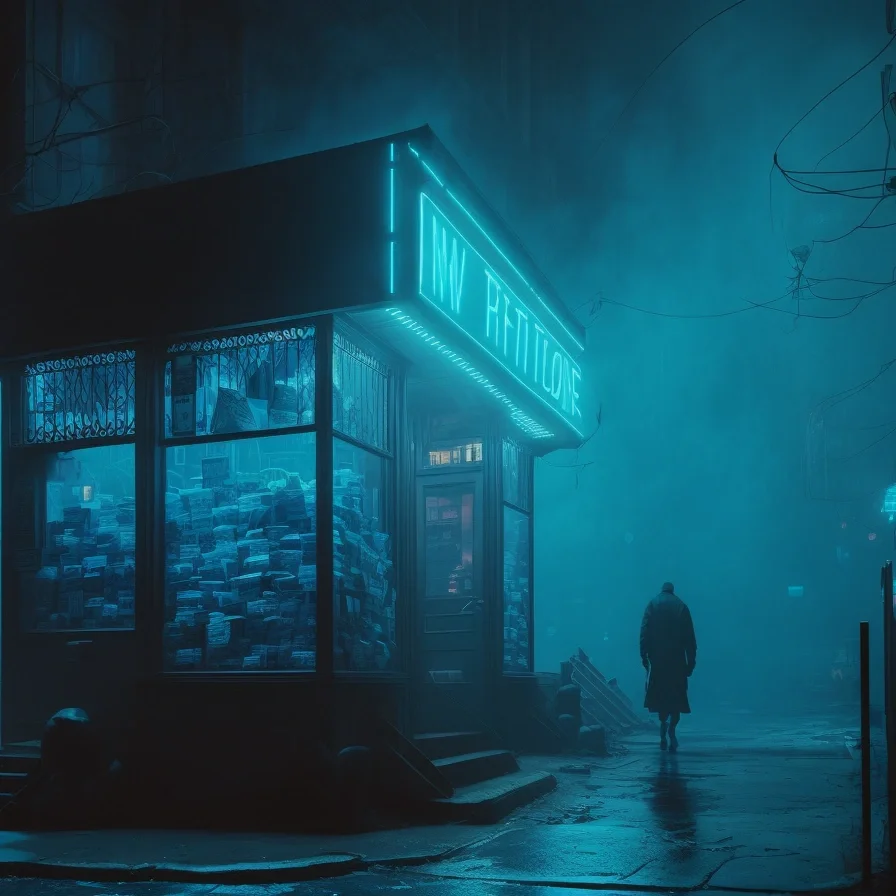The Archive Whisperer: Part One
Act 1: New Amsterdam
Manhattan’s New Amsterdam library was one of the city’s hidden gems. Primarily frequented by locals and academics, it was sufficiently Upper West enough to avoid the casual tourist drop-ins found further south. Within, the Luminis Reading Room was the gem within the gem. The true heart of a building which had survived much and preserved all. There was an old saying amongst its librarians. That anything which arrived at Luminis never left. It often applied to anyone too. No-one was allowed to take anything out, and all the library did was consume the world’s knowledge, one manuscript at a time, in its insatiable appetite to never lose sight of the past. But the reading room was only a front for where the real work took place. Several floors below the Luminis were the New Amsterdam’s archives. Inhabited by the kinds of literary mole people one only found in the deepest of reads, and the darkest of the world’s corners.
Many had read of the archives, and every now and then one of the manuscripts would make its way up to the main floor for exhibition. Temporarily graduating from basement to first and enjoying what little was left of the city’s fresh air, before descending again for another hundred years of subterranean darkness. The manuscripts archive was vast. No one person really knew what was even down there. Over the years there’d been several attempts to catalog, even digitize the material, but without success. The manuscripts usually just dissolved in the archivists’ hands as soon as they touched them, crumbled under the lights while being photographed, or just dissolved in attempts to scan them. Even if they did manage to get a digital version of the piece, the pace of technology often made the files obsolete before they’d even scratched the surface of the first case. Many talked of the collection needing to be in the Smithsonian. That it was too important to leave to local custodians. But the archive couldn’t even be moved without destroying it. So it stayed.
Act 1: The Grand Archology
No one knew the full extent of what was down there. But every now and then the archivists found patterns in the grand archology. Those faintly pulsing originating connecting dots which pair together previously distant relatives and illuminate a new whole. These dots might be symbols, codices or numerical annotation in the margins of long-shut tomes. A common publisher, engraver or binder. But in the millions of documents, the sheer number of possible connections far surpassed both human and technological means of comprehension. There was simply too much to draw even the faintest of commonality outside of how the manuscripts had been arranged on the same shelves over time.
It was in this darkness that Alice Faraday thrived. Ever since she could remember, she’d always loved the smell of dusty old books. The feel of crumbling leather bound encyclopedias in her hands. And the joy of opening a book for the first time in centuries. She’d been employed at the library for several years, but was never formally interviewed. She just kept showing up until they couldn’t get rid of her and decided to just put her on their meager payroll. No one was there for the money. Everyone was there for the sheer love of the work. Alice held a degree in mathematics from Princeton University, and held a deep passion for deciphering ancient cryptic symbols. Despite her friends’ encouragement to swipe right, Alice never really ventured out into the city at night. She preferred the familiar embrace of her father’s old chair and a good book illicitly borrowed from work as she collapsed after a long day underground. She wasn’t a loner, she just counted her friends amongst the heroes of the past, where she had a particular fondness for Borges and Cervantes.
Act 1: In Obscuris Quaerimus Luminem
Yet despite all her reading, Alice never slept easily. Her mind raced with the work of today, and the work ahead of tomorrow. But in it, she often ruminated on the phrase In Obscuris Quaerimus Luminem. In the dark we seek light. It was one of those old Latin sayings she just couldn’t shake. It would find her on the subway, in the grocery store, even in her dreams. As she finally drifted off to sleep, the half-life of the city drifting away beneath her pre-war condo, she jolted awake. Someone was in her apartment. She hadn’t heard anything. But she felt it. Really felt it. Adrenaline coursed through her body in the darkness as she fumbled for her glasses on the bedside dresser. It was too far to get something from the kitchen. What if they were already in the kitchen. Her heart raced with thoughts. Why. Who. Slowly she eased herself out of bed, her feet feeling the cold of the parquet floor. She picked up the only weapon she thought might have a chance at braining an intruder, her lamp. Whoever it is was about to get sparkled. Rounding the corner of the bedroom and into the living room, a rogue floorboard creaked under her left foot. A chill ran down her right arm. Someone was definitely in here. Rubbing the sleep out of her eyes with one hand, and gripping the lamp with the other, she edged her head around the corner.
A distant voice called out in the dark. In Obscuris Quaerimus Luminem. A voice she recognized but couldn’t place in her nocturnal confusion. In Obscuris Quaerimus Luminem. Again. Slowly reaching for the light switch, she readied, steadied herself for surprise. In Obscuris Quaerimus Luminem. That wasn’t just her imagination, right? She hit the light switch as her heart pounded out of her chest. Nothing. The switch wasn’t working. But she’d just changed the light bulb last week. Then, alerted to her presence, a shadowy figure appeared to turn towards her, and disappeared as soon as she’d noticed it. An arcane crackle came from the light, and without her intervention, turned on. Alice breathed a sweaty sigh of relief. What the fuck was that. I’m working too hard. I really have to up the melatonin before bed, she thought. As her chest calmed, she went back to bed, her head now full of whatever had just happened.
Alice woke the next morning, as she always had for the past three years. Two minutes before the alarm clock went off. Why even keep setting it if I always beat it? Because that one time I don’t do it will be the time I sleep through the entire morning. In Obscuris Quaerimus Luminem. Alice readied herself for the day ahead, and over hastily prepared coffee scrolled through a feed of people pretending to be living their best lives for an audience of people they didn’t know. As she grabbed her Princeton Math sweater, which proudly declared its wearer a weapon of math destruction, she felt that same chill run down her right arm from last night. On the rug, right where the figure had been, was a small symbol burned into the floorboard. Great, there goes my deposit. Alice looked closer. She knew it. She couldn’t remember where, but she knew it. Ugh. How am I going to get rid of this. Grabbing her phone, she snapped a photo of it, and decided to head out to work.
Act 1: Ciphers & Whispers
That October morning was the most Upper West Side of mornings. The kind of fall morning you see in Woody Allen movies. Swirling autumnal leaves, a healthy dose of expensive scarves, and everyone nursing a coffee. Alice didn’t notice any of it. In Obscuris Quaerimus Luminem. If she couldn’t shake it before, now the sound of it inside her head had become deafening. The Latin had become amplified by a symbol. She thought she knew both, but it wasn’t until she got to work that she could set to work. Local cuts had made the archival work had been slow of late, so she’d have plenty of time to wrap her head around whatever the hell happened last night. She had evidence on her phone, and evidence in her head. In time, and with enough geological pressure, she would force the enigma to reveal itself to her.
Despite being seared into the dull wood, the symbol itself had several complex and intricate components. It was a unique glyph which resembled a stylized, interconnected T and C. Radiating outward from the central glyph were a series of patterns which Alice recognized as being inspired by mathematical symbols frequently used, but long forgotten by eighteenth century watchmakers, who would encode the inside backs of their timepieces with specific arrangements for dates, locations, messages to lovers and references to historical events. Additional layers included what looked like roman numerals, or some primitive form of an old binary numeric system. It all meant something to someone. Alice set to work.
Act 2: The Tenebrae Custodia
Often more the stuff of myth than reality, the Tenebrae Custodia (The Guardians of Shadows) are rumored to be a clandestine, but influential secret society, working to shape the political and economic paths of New York. They’re an enigmatic organization rarely written about, but often referenced by locals as a hidden hand, guiding events in the five boroughs. Their origins are veiled in secrecy, with rumors and whispers suggesting they have existed for centuries, and fueled by an elite lineage passed down through influential academics, the inherited wealth of the city’s old money, and major cultural institutions. It’s said to be composed of a select group of powerful individuals, rarely seen but gathered from all walks of life, including politicians, business magnates and academics. How one becomes a member is shrouded in mystery, but influence, intelligence and a dedication to furthering the society’s objectives are paramount.
Their work has been said to influence electoral outcomes, rebuilt the city, swayed the direction of business decisions, and shaped cultural, even sporting events. They are best known for communicating through intricate symbols and numerical codes, exerting control and signaling to acolytes within the society when and where to act. These symbols often appear etched on the sides of cultural and academic institutions, but they are also often hidden as numerical messages deep within the archives of the city’s libraries. Hidden from public scrutiny, such cryptic communication hides in plain sight as sleepless New Yorkers go about their day. Those attempting to decipher the symbols rarely succeed, but point to strange phenomena within the city’s architecture, such as Herald Square’s mysterious glowing owls, or the periodically strange arcane electrical pulses which cause cars to shut off within a three block radius of the Empire State Building.
Who the Tenebrae Custodia are and what they want has motivated the city’s conspiracy theorists for centuries. Anyone who goes public with their findings often finds themselves at the bottom of the East River. The trail of stories always runs ice cold. But over the years, enough information has been able to be patched together to form a blurry picture of the society’s principals. Originating with the arrival of Samuel Locke into New York harbor in 1784, it’s possible to draw distinct lineage of activity and influence from then to now.
Act 2: The Tenebrae Custodia’s Origins & Influence
Born in Aberdeenshire, Scotland, Samuel Locke arrived in New York Harbor on the morning of November 5th, 1784. His British origins are a source of disagreement, but consensus aligns around the unexpected death of his parents, who were found hanging from the same tree on the family estate one morning. After which Samuel was never seen again, except for one visit to a London bank, where he withdrew the entire family fortune. Boarding The Custodia, an old ship bound for the new world, and using a stolen pseudonym and papers, he endured a rough passage across The Atlantic, and began his new life in New York as Doctor Daniel Sterling. In the rough and tumble of early eighteenth century Manhattan, Sterling maneuvered himself into increasingly powerful positions of influence within political life.
A charismatic orator, there were even whispers for a run at governing. But what he was best at was surrounding himself with those more powerful than himself, and growing his own influence by association. He was masterful at gaining access and invitation to all the right rooms. The rooms where things happened. Through this, he began to play the city’s elites against each other through a network of spies which ultimately grew beyond even his ability to number. A shadow, subterranean web which listened behind closed doors, followed those under suspicion, and sought to disappear into the background as they observed the conversations around them. All of it reported back to Sterling, who would direct an increasingly complex game as his fortune and influence grew. By 1800 anyone who mattered in the city was consulting him on private matters.
Yet for as learned as he was, Sterling could read, but never learned to write. Instead his written language consisted of complex symbols, codes and numerical systems, which he would use to direct those beneath him and signal his instructions. Individual codes and ciphers became commonplace in his communications, and he was fond of leaving these notes in his manuscripts for others to find. The language was impenetrable to outsiders, but began a legacy of increasingly opaque codes woven deep into the city’s literary infrastructure. Hundreds of Sterling’s notes have been found in library archives, abandoned basements, and cultural excavations. In particular his notes point to influence over labor practices, especially around manufacturing and transportation, and the quiet suppression of unionization.
For as mysterious as his life had become, his outward public appearance thrived in early nineteenth century Manhattan society. But over time he would start to recede from public life, choosing to spend his days continuing to write lengthy directions to those around him for what was to happen after his death. He received fewer and fewer visitors, stopped bathing, and refused to dress himself in the morning. His eyesight failed. He grew his hair out, and began to repeat the phrase Obscuris Quaerimus Luminem over and over to himself. The repetition turned from whisper to scream at night, and his writing intensified. He complained of shadowy visitations. Often needing to be restrained from self-harm in his last days, Sterling ended his life by drinking the contents of his inkwell, and leaping from his window, where he was found by members of the society he had founded, the Tenebrae Custodia. Sterling was buried in Washington Heights, but few grieved him. The service was as he had lived. Intimate, and secret. The grave was unmarked, except for a small brass plaque, covered in symbols and numerical codes he had designed himself, and later moved to Central Park. These codes meant something to someone. And that someone knew exactly what to do next.
By the time New York’s gilded age arrived, the Tenebrae Custodia was unrecognizable from the original society of influence which Sterling had built in the echoes of the revolutionary war. The organization ran local elections, and shaped isolated economic disparity to suit their own ends, with accumulated wealth as the primary driver behind their work. They were the hidden hands of the city which operated in plain sight. But they also supported a renaissance of the city’s cultural and creative institutions. They were the primary donors towards the building of the East Side’s Guggenheim Museum, as well as substantial contributors to the founding of the Whitney Museum. They supported gallerists and artists, and pushed much of the political motivation behind abstract expressionism as it found its cultural home during the cold war.
In recent years, they have turned their attention to bigger and bigger projects, especially in real estate. They acted as a shadowy political and economic force behind much of the redevelopment of downtown Manhattan’s mass transit system under Robert Moses, and helped secure many of the land rights from the crumbling railroad yards in order to build a new neighborhood on the west side. Hudson Yards, with its towering modern glass skyscrapers and astronomical apartment prices now attracts the world’s elite, especially those from overseas looking to invest their money offshore into an asset which never declines in value.
Act 2: The Tenebrae Custodia’s Grip On Power
From what little information is known within the secretive world of the Tenebrae Custodia, handling disagreement and problematic matters is often thought to be a delicate and intensely covert process. When suspicions arise about a member of the network's loyalty or intentions, the Custodia initiates a series of internal investigations, surveils the member over time, and looks for infractions. They discreetly gather information and evidence to determine whether the member poses a threat to the society's secrecy or objectives, and acts swiftly upon the discovery of any infraction, perceived or real.
If a member is deemed problematic but not an immediate threat, the society has been rumored to use methods of exile, increasingly isolating them from sensitive information and key decision-making processes. This limits the member's influence and access to potentially damaging secrets, and they are pushed further and further towards the periphery, until they are pushed out entirely. In some cases, they may attempt to manipulate or coerce problematic members into compliance. They may use personal information or vulnerabilities to ensure the member's loyalty and silence. And as a last resort, seek to silence the member permanently.
For members who prove difficult to control or who pose a more substantial risk, the society may arrange for their voluntary or forced exile. These individuals are referred to within the society as The Undeserving. This involves the member disappearing from society, leaving behind their former life and connections, and being forcefully relocated to a remote location to ensure they can no longer contribute to the society's activities. In cases where members threaten to expose the society's secrets, the Custodia may employ tactics to discredit them, making their claims seem implausible or the result of personal vendettas, or resort to violence. This can involve manipulating public perception through media control and disinformation campaigns, including tactics of economic abuse. While rare, if a problematic member becomes an imminent threat to the society’s existence, they may resort to more extreme measures, including eliminating the member, an act typically handled directly by one of the society’s acolytes.
Act 3: Prominent Members of The Tenebrae Custodia
Eleanor Sterling is a prominent figure within Manhattan society. A wealthy philanthropist known for her frequently generous donations to cultural institutions, particularly libraries and museums, she is descended from some of the original immigrants to New York in the late eighteenth century, and is proud of her Scottish heritage. With a fascination for complex codes and numerical systems, her private collection of manuscripts numbers in the thousands, and is stored by generous endowment in many of the city’s libraries.
Her economic and political influence in the art world gives her a unique role within Manhattan, and she has been instrumental in guiding the building of contemporary museums as well as promoting New York artists such as Andy Warhol, Jackson Pollock and Jean Michel Basquiat. Her personal wealth is estimated at over 5 billion dollars, mainly as a result of inherited familial wealth, but also through shrewd and timely investments, especially in west side Manhattan real estate.
Victor Thornfield was a reclusive technology mogul and digital encryption pioneer, having developed the advanced encryption technology used in numerical messages during the Second World War. He went on to found a number of incredibly successful personal security organizations, many of which still encode the transmissions between the world’s politically powerful today. Despite his vast wealth, Thornfield was a notoriously secluded individual, never marrying. Instead, choosing to spend time with his machines, creating and deciphering increasingly complex numerical surveillance systems, and installing them into prominent buildings such as The New York Herald publishing building, and The New York Public Library.
He was instrumental in developing the Grand Central clock, which has never required an external source of power, and has never needed to be adjusted. Its casing was sealed upon completion, and even recent thermal imaging efforts to understand its inner workings were proven unsuccessful. Whatever the clock is hiding, it will take its destruction to reveal its secrets.
A brilliant academic specializing in ancient religious histories at Princeton University in the late nineteenth century, Isabella Delacroix was a deeply respected authority on the city’s historical symbols and their architectural implementation. In her extensive written work, her papers always open with the latin phrase Ad Astra Per Codices, or to the stars through codes. The significance of the phrase for Delacroix remains shrouded in mystery, but some speculate she was involved in late Victorian efforts to launch a man into space, and was close with many of the principal figures of New York’s Sterling family who sought to fund the effort. Delacroix died in mysterious circumstances in Central Park in 1908, where her body was found floating face down in the central reservoir with a note attached to her lapel referencing a bronze plaque. The note contained intense, densely packed numerical shapes and symbols, often including owls, which illuminated to the touch and have never been solved.
Henry Worthington is a charismatic media mogul and owner of several influential news outlets, including the revived New York Herald. A master communicator, he is often criticized for seeking to shape public opinion through inflammatory opinion pieces, and the bending of reported truth to further his own business interests. The son of a watchmaker, Worthington came to America in the sixties in mysterious circumstances following the joint suicide of his parents in Australia, causing him to inherit the family fortune. Worthington recently moved his television operations into the new building at 5 Hudson Yards, where he also maintains a residence with his wife and three grown children. His sons Samuel and William currently serve on the board of directors. His daughter, Emily is currently missing.
Act 3: The Tenebrae Custodia’s Acolytes
If the Tenebrae Custodia’s principals were a collection of shadowy individuals, their acolytes were the ones who actually got the job done. Selected from within the ranks of the society’s most devoted members, they often come from diverse backgrounds, including scholars, librarians, cryptographers, and even artists, and undergo a highly secretive, rigorous induction ritual. Their sacrifice includes taking oaths of secrecy and loyalty, but also enduring the transfer of tattooed numerical symbols onto their bodies, which serve as both identification but also communication between members. The ascetic process by which these symbols become inked onto the acolytes bodies takes many months of grueling, physically intense work, often without the aid of anesthesia before they are assigned their first set of tasks. Assignments can last lifetimes, and are frequently inter-generational, handed down between acolytes in familial rituals over time.
Within the community of acolytes, there exists a centralized governing body, whose role it is to ensure that the necessary protections are in place across the network, and that the integrity of the society’s numerical systems of codes and symbols remains hidden from public understanding. This small leadership group are referred to as The Deserving, acting as protectionists and archivists, curating the society's vast collection of books, manuscripts, and historical records. They catalog and maintain the Custodia’s extensive archives, and may be tasked with infiltrating other organizations, libraries, or institutions to gather information or manipulate events discreetly. Loyalty is everything, and The Deserving are bound by strict oaths of silence and secrecy, the breaking of which exclusively results in death. Betrayal is often met with swift and painful retribution.
Act 3: The Undeserving
Silas Pembroke always flew too close to the sun. And the night he met Emily he knew his life would never be the same. He’d grown up with what he thought was being homeschooled, where in reality he was already being groomed for life as a future acolyte within the Tenebrae Custodia. His father, covered in tattoos, was rarely home, and it was left to his mother to raise him based on his father’s highly detailed and often opaque instructions. Life in their Williamsburg studio left little room for anything other than each other, and the work of indoctrination. Yet despite an insulated upbringing, Silas had grown into an affable, gentle young man, with much to offer the world.
Except that world would increasingly close in on him the more his father began to pay attention to his growing son’s proximity towards joining the Custodia’s society of acolytes. His father began spending time with him explaining the meanings of the symbols which covered his body, and why one day he’d have the honor of wearing them too. He’d describe hidden subways and dusty basements, full of secretive knowledge about life in the city. And he’d explain why the work they’d do together was so important for the survival of millions of people. Silas drank it all in, and believed it all. Believed in his father, and every word he said. Over time, Silas would become his father’s son. He’d follow his father into the acolyte’s ranks, and continued the secretive work his father had started decades earlier. His body’s markings would grow with every excruciating ritual of marking, leaving him scarred both in and out. He grew his beard and shaved his head. He grew in confidence about his life in the shadows. He was doing good work. He was alive.
Emily had always pulled away from her strict upbringing as the daughter of a wealthy businessman. Never comfortable with the trappings of society life, she preferred to spend time downtown with her artist friends, hanging out in the park and listening to music which was always too cool for school. Never comfortable to talk about where she was from, she drifted in and out of relationships, and never really committed to anything. She loved handsome hipsters, and like a moth to a flame, always flew just that little bit too close to them. That is, until she met Silas. They’d seen each other walking The High Line several times over the past few weeks, and had smiled that urban smile to each other where mutual acknowledgement is just detectable enough to be hidden between two people. But the spark had already been lit. She was always with someone. He was always on his own. Neither wanted to say anything. Neither wanted to make the first move. But whatever it was, it was happening.
An exhibition of light installations by the artist James Turrell at the nearby Whitney Museum had been the must-see show of the summer that year, plunging visitors into submersive color fields and rich, dark environments which deceived the senses. It would happen here. Silas saw her across the room, alone. He walked up behind her, and as she moved backwards, she brushed against him. The spark had become a flame. They smiled at each other, and Emily whispered in the way only permissible in a gallery, hi. Silas asked what her name was, and the wheels turned. Over time they would both summon the courage to call each other. For Emily it felt different than before. More intense. More real. For Silas she was intoxicating. Everything about her caused his mind to race and his body to surge with excitement. But it could never last. Silas could never tell her who he really was, and Emily was just as reluctant and unable to talk about her background. She asked about his markings but got vague answers. He asked about her family, and got the same. The flame became a fire.
Over time the vague answers would turn to shared truth. Emily confided in Silas who she really was, and how she loathed everything her father stood for, pointing to all the damage his media empire had done to the city. Silas knew exactly who her father was, an always had. He began to explain what his markings meant. He spoke of William, a neighbor who’d often been there in place of his father and who was the only other person he’d confided in about the society. He confessed to secretly passing his body’s secrets and numerical codices to him. And he told her everything. They wept, knowing that if they were ever going to stay together, they’d have to be far, far away from here. They’d be forced to disappear.
Act 4: The Tenebrae Custodia’s Symbols & Codes
The Tenebrae Custodia communicate using cryptic symbols and numerical codes hidden within the pages of books in various archival institutions across New York City. These symbols and codes are designed to appear as ordinary annotations or decorations in the books, making them challenging to detect without specialized knowledge, and in some instances, the society may even use books with specially crafted hidden compartments. These compartments obfuscate documents, photographs, or other items which hold crucial information about the society's history, members, and activities. The society maintains its own secure archives, located in a hidden and heavily guarded location, rumored to be an abandoned downtown subway station, housing the most sensitive and important documents related to the society's history and operations, where access to these archives is restricted to a select few members.
In the modern age, the society employs pioneering digital encryption techniques to protect their electronic communications and records. These encryption methods are incredibly difficult to decipher without the appropriate keys or knowledge, and the society employs a strategy where no single member possesses the complete knowledge of all their secrets. Each member is entrusted with only specific pieces of information, ensuring that even if one member is compromised, the full extent of the society's secrets remains hidden. Only the highest-ranking members have access to the most sensitive secrets, while lower-ranking members are kept in the dark about certain aspects of the society's activities. The society has also been known to manipulate historical records and narratives to obscure their involvement in significant events, especially acts of violence and electoral fraud. They ensure any perceived influence upon historical events is downplayed or erased from official accounts through the employ of archivists under the direction of senior acolytes bound by strict secrecy oaths, and who enforce the fear of severe consequences for violating their commitment to the society.
Act 4: The Codex
The codex holds the key to unraveling the Tenebrae Custodia’s secrets, where individual parts of it are often tattooed onto the bodies of the society’s acolytes. The codex itself is a legendary ancient manuscript rumored to have been created by the founders of the Tenebrae Custodia in the late eighteenth century, and is said to contain the complete history, objectives, and encoded messages of the society. Its existence is shrouded in mystery, with some even doubting its authenticity. Bound in rich leather and adorned with intricate engravings and embossed symbols, its pages are made of high-quality parchment and are filled with handwritten text and illustrations, which often appear in more public form on mysterious small bronze plaques around New York, especially on benches in Central Park.
Alice had been staring at the same burned symbol for hours. She hadn’t hit the point of frustration just yet, but she had long reached the point of exhaustion. She needed to call for backup, and there was only ever one person she could trust. Detective Somerset had been coming to the New Amsterdam library for years, sitting alone and working his way through a large number of encyclopedic tomes about immigrant arrivals into New York in the 1780s. He kept showing up, and over time, had struck up a friendship with Alice where she’d help him decipher the crumbling old ships’ logs, and he’d help her figure out how to think about solving her ancient math problems. He was long retired from the force, but once a sleuth, always a sleuth. She called him William. Never Bill, as his few remaining friends did. At the end of a long day, Alice asked him to stop by downstairs and see what he thought about something she was working on, that she’d gotten stuck with.
Alice showed William the photo of what had been burned into her apartment floor, and asked him if the phrase In Obscuris Quaerimus Luminem meant anything to him. The blood drained from William’s face as if he’d seen a ghost. Where had she seen this? She relayed the half-dream story of the ghostly figure in her living room, which disappeared as soon as it had arrived, leaving an arcane electrical crackling and the mark on the floorboards. Oh my God, they’re here. Is it some kind of codex? Some kind of key? I can’t find it anywhere in any of our records. William asked if she still had the names of the list of ships which had arrived into New York harbor in 1784.
It was around here somewhere. Except it wasn’t a ledger at all, maybe it was a codex. Look here, see where it says Dr. Daniel Sterling as a passenger? Look closer. See how the signatures of departure and arrival are clearly from two different hands? Look again. The ship he came in on, the Custodia, only ever existed on paper. Doctor Daniel Sterling, never existed. This ship had never departed or arrived at all. It had been fabricated into existence to mask Sterling’s passage and his transition from Samuel Locke. A ghost ship, carrying a cargo of ghosts to the new world. Ghosts who communicated in numerical symbols. Ghosts who were now in Alice’s apartment.
William was shaking. This is what he’d been looking for all along. The myth of a ghost who had murdered its parents before seeking passage across the Atlantic, and where over time the dead would come to control the living, and in this case, an entire city. Here was Locke’s departure, and Sterling’s arrival. Here was the ghost in transit on a ship which never existed. In Alice’s hand was the key to unlocking the vast network Locke had built over centuries in New York, which would at last reveal the hidden hands behind the city’s political, economic and cultural history. I’ve seen this symbol in the park, said William. It’s Sterling’s marker, near where Isabella Delacroix was supposed to have drowned.
Alice was consumed in deciphering the symbols she’d found in the margins of the 1784 ledger and correlating them with the markings she’d found left on her floor. Commonality revealed a simple phrase. Nos Tenemus Claves. We hold the keys. Who held the keys? The glyphs would reveal themselves to be a date. November 5th, 1784. The supposed date of Sterling’s arrival into the city. But the markings around the more complicated symbolic glyphs revealed something else. A series of names. Eleanor. Victor. Isabella. Henry.
William knew the codex’s connection to Isabella Delacroix’d death, but who were the others? As they filled their notebooks with increasingly complex calculations, their mathematical labors were sharply interrupted. The lights dimmed and a crackle filled the archive’s stale air. Someone else was in the room with them.























































